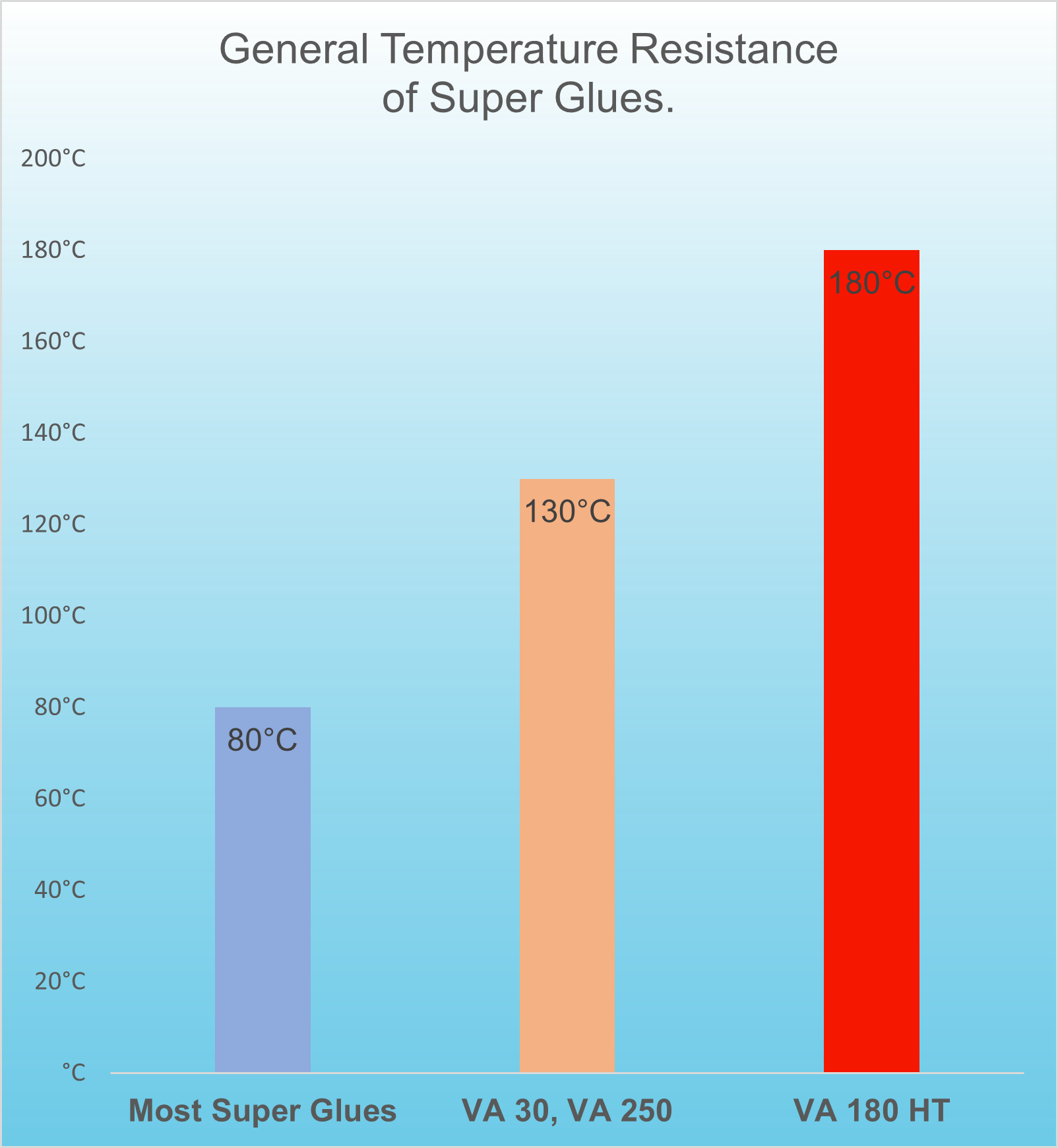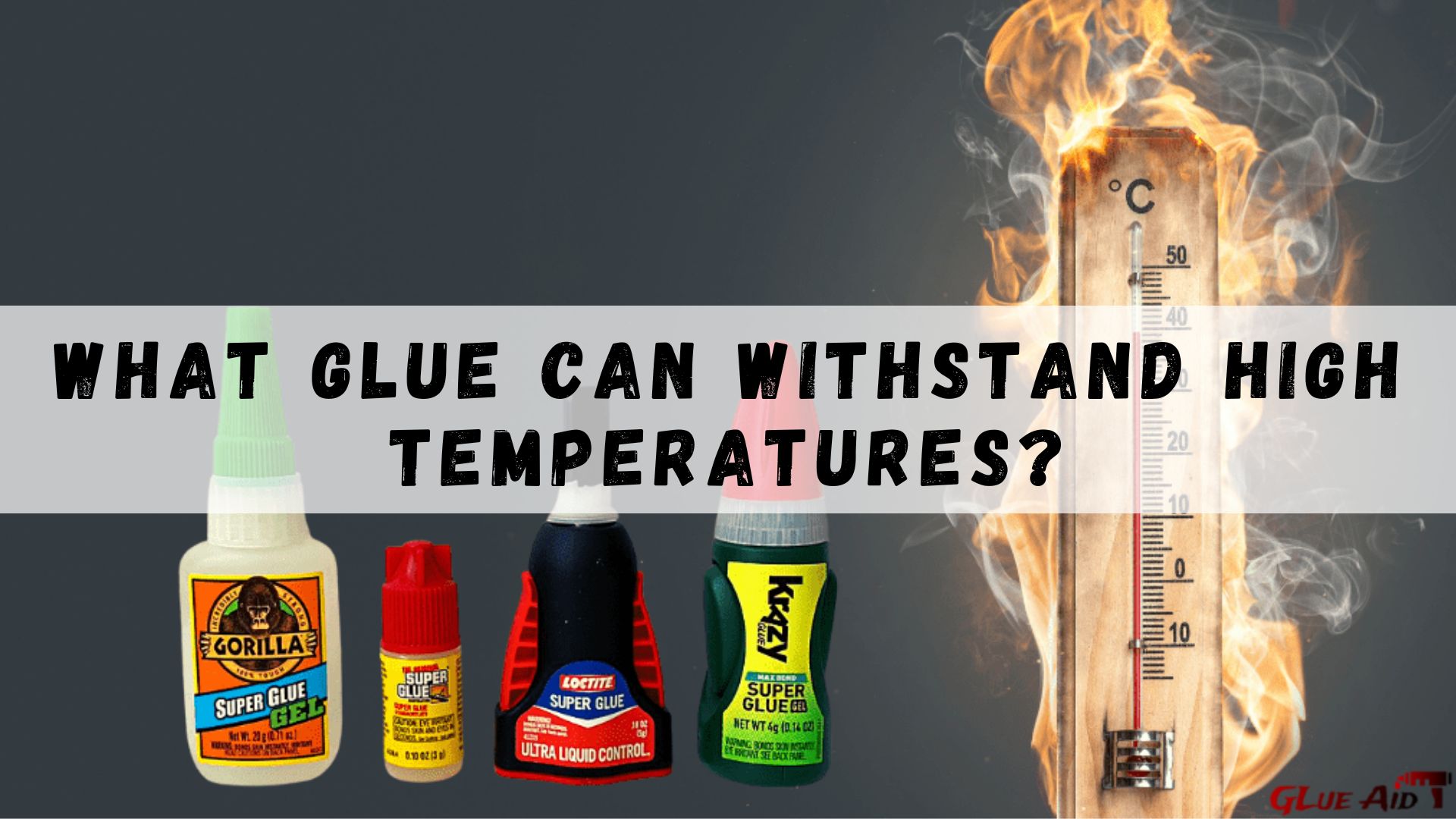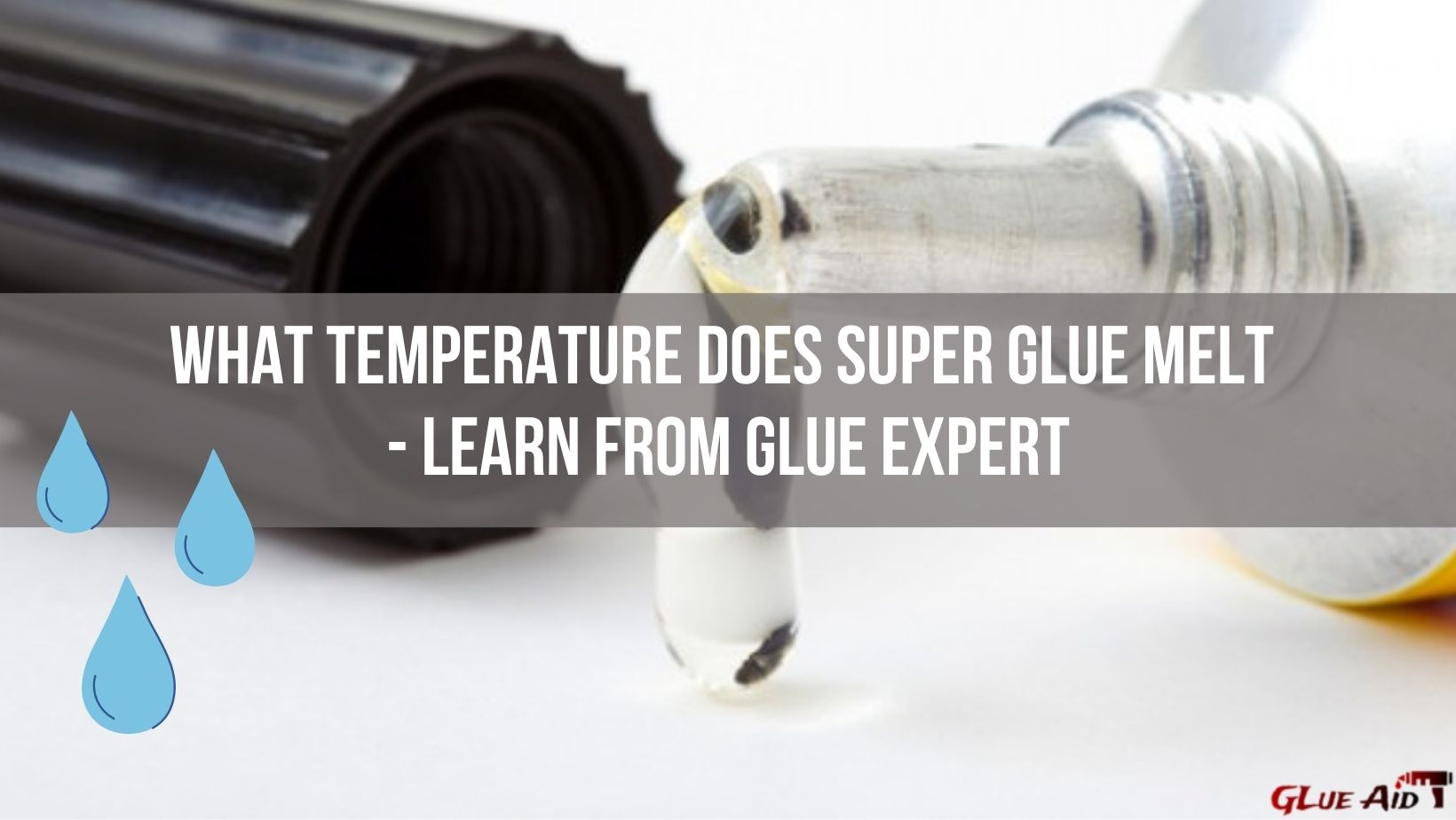Super glue melts at a temperature of around 100 degrees Fahrenheit. This means that if you accidentally get super glue on your skin, it will melt and cause irritation. If you are using super glue to repair something, make sure that the area is well-ventilated so that the fumes don’t cause any problems.
What temperature can super glue withstand
It can be used for a variety of purposes, from repairing broken items to bonding together different materials. But how strong is super glue, and what temperature can it withstand? Super glue is made up of two main ingredients: cyanoacrylate and an accelerator. Cyanoacrylate is a type of plastic that quickly hardens when exposed to air. The accelerator helps to speed up this process so that the glue can set more quickly. Super glue is incredibly strong and can bond materials together very securely.
However, it is not indestructible. If exposed to high temperatures, super glue can melt and lose its adhesive properties. The melting point of super glue is between 120-130 degrees Fahrenheit. This means that if you’re using super glue in a situation where it might be exposed to high temperatures, you need to be careful. For example, if you’re using super glue to repair a broken cup, you shouldn’t put the cup in the dishwasher afterwards, as the high temperatures could cause the glue to melt and the repair to come undone. In general, super glue is a very strong and durable adhesive. However, it’s important to be aware of its limitations and to use it carefully to avoid damaging your repairs.
At what temperature does super glue fail?
Super glue can begin to fail at temperatures as low as 50 degrees Fahrenheit. This is because the glue begins to soften and lose its hold. As the temperature continues to increase, the glue will eventually melt.
Can dry superglue catch fire?
The ingredients in superglue are not flammable, but the fumes from the glue can be. If superglue is used in a well-ventilated area, the fumes will not be a problem. If superglue is used in a confined space, the fumes can build up and catch fire. The temperature at which superglue melts is around 300 degrees Fahrenheit.
Is super glue still flammable after it dries?
Yes, super glue is still flammable after it dries. This is because the chemical composition of super glue includes a solvent that evaporates as the glue dries, leaving behind the active ingredients that are still flammable. The temperature at which super glue melts varies depending on the specific formulation, but is typically around 150 degrees Fahrenheit.
Can super glue tolerate heat?
It is important to note that super glue is not entirely heat-resistant. While it can tolerate high temperatures, it will eventually melt if exposed to heat for extended periods of time. This is why it is important to be careful when using super glue and to avoid applying it to surfaces that will be exposed to extreme heat.
Is super glue flammable after it dries?
Super glue is not flammable after it dries. However, it can be melted by high temperatures. Super glue melts at around 100 degrees Celsius.
Is super glue temperature sensitive?
Super glue is temperature sensitive, which means that it will become less effective as the temperature decreases. However, it will not melt at room temperature.
What temperature can Gorilla Super Glue withstand?
Gorilla Super Glue can withstand temperatures up to 200 degrees Fahrenheit. However, the glue will melt if exposed to temperatures above 200 degrees.
Can you put super glue in the oven?
No, you shouldn’t put super glue in the oven because it will melt at high temperatures. Super glue is made of plastic and will start to deform and melt at temperatures above 200 degrees Fahrenheit. So if you’re looking to melt some super glue, you’ll need to put it in an oven that’s set to at least 200 degrees.
What happens if you heat super glue?
If you heat super glue, it will melt. This can be a problem if you are trying to remove the glue from something. The heat can also cause the glue to emit fumes that can be harmful to your health.
Can super glue withstand heat?
One question that often comes up is whether or not super glue can withstand heat. The answer to this question is yes and no. Super glue is designed to withstand high temperatures, up to 250 degrees Fahrenheit. However, once super glue is exposed to temperatures above this, it will begin to break down and melt. So, if you’re looking to use super glue for a project that will be exposed to high temperatures, you’ll need to choose another type of adhesive. However, if you’re using super glue for a project that will be kept at room temperature or below, it should hold up just fine.
What is the best glue for high temperatures?
There are a few different types of glue that can withstand high temperatures without melting. One type is epoxy, which is a two-part adhesive that comes in a tube. It sets quickly and can withstand temperatures up to 350 degrees Fahrenheit. Another type of high-temperature glue is silicone adhesive, which can withstand temperatures up to 500 degrees Fahrenheit.
Does super glue really work?
Super glue is typically used for household repairs and can be used on a variety of materials, including plastic, metal, and glass. So, does super glue really work? In most cases, yes! Super glue is designed to create a strong, permanent bond between two surfaces. However, there are a few things to keep in mind when using super glue. First, make sure that the surfaces you are trying to bond are clean and free of any debris. Second, super glue works best on smooth surfaces.
If the surfaces you are trying to bond are not smooth, the bond may not be as strong. Finally, temperature can affect how well super glue works. Super glue works best at room temperature. If it is too cold, the glue will not bond as well. If it is too hot, the glue can actually melt, so be careful! Overall, super glue is a great product for household repairs. Just be sure to keep the above tips in mind to ensure the best results.
How much heat can super glue withstand
But how much heat can it withstand? The answer depends on the type of super glue you are using. Some types can tolerate high temperatures, while others will melt at lower temperatures. Generally speaking, most super glues can withstand temperatures up to 120 degrees Fahrenheit. However, there are some types that can tolerate even higher temperatures. So, if you need a super glue that can withstand high temperatures, be sure to choose one that is specifically designed for that purpose.
Can Super Glue handle heat?
While Super Glue is strong and durable, it is not designed to withstand high temperatures. If exposed to heat, Super Glue will melt and lose its adhesive properties.
What glue can withstand 500 degrees?
Super glue can withstand temperatures up to 500 degrees Fahrenheit.
Is Super Glue heat sensitive?
Super Glue is not completely heat resistant and can melt if exposed to excessive heat.
What kind of glue holds up to heat?
This means that it can withstand high temperatures without melting or losing its adhesive properties. This makes it ideal for use in applications where other types of glue would not be able to withstand the heat.
Can Super Glue stand high heat?
There are some limitations to what super glue can withstand. While it can withstand high temperatures, it will eventually melt if exposed to too much heat. This is why it is important to use super glue in a well-ventilated area and to avoid using it on surfaces that will be exposed to direct sunlight or other sources of high heat.
Can super glue melt from excessive heat?
Super glue can melt from excessive heat. This usually happens when the glue is overheated or exposed to direct sunlight. When this happens, the glue will become brittle and eventually break down.
Can super glue heal wounds?
Super glue is not necessarily the best option for healing wounds. While it may temporarily hold the wound together, super glue can actually cause more harm than good. The reason for this is that super glue is designed to bond quickly and strongly, which can cause the skin around the wound to tear when the glue is removed. Additionally, super glue can cause an allergic reaction in some people. So, while it may be tempting to reach for the super glue when you have a cut or scrape, it is best to stick with traditional bandages and medical tape.
Can super glue fumes hurt you?
If you’re working with super glue, it’s important to be aware of the potential dangers of the fumes. Inhaling the fumes from super glue can irritate your nose and throat, and cause headaches, dizziness, and nausea. In some cases, it can also lead to more serious health problems like liver damage or kidney failure. So it’s important to work in a well-ventilated area and wear a respirator if necessary. The good news is that the fumes from super glue won’t hurt you if you’re just exposed to them for a short period of time. So if you accidentally glue your fingers together, there’s no need to panic. Just open a window and let the fumes dissipate.
At what temperature does super glue melt
The glue will set in a few seconds and will continue to harden as it dries. Super glue is designed to be used at room temperature, but it can also be used at lower temperatures. However, if the temperature is too low, the glue will not be as effective. It will take longer for the glue to set and it will not be as strong. In addition, the glue may become brittle and break if it is exposed to too much cold. To prevent this, you can try using a heat gun or hair dryer to warm the glue before using it. You should also make sure that the surfaces you are trying to glue are clean and dry before applying the glue.
What temperatures can super glue withstand?
While most adhesives will start to break down and lose their strength when exposed to high temperatures, super glue is designed to withstand temperatures up to 200 degrees Fahrenheit. This makes it an ideal choice for applications where the adhesive will be exposed to heat, such as in automotive applications. So, if you’re looking for an adhesive that can stand up to the heat, super glue is a great option. Just be sure to follow the instructions on the package, and you’ll be able to create a strong and lasting bond.
Is dried superglue flammable?
Dried superglue is not flammable. However, the fumes from heating superglue can be irritating to the eyes and respiratory system. When superglue is heated, it releases a gas that can cause coughing, wheezing, and shortness of breath. If you are exposed to the fumes, open a window and leave the area to get fresh air.
Will heat loosen super glue?
No, heat will not loosen super glue. Super glue is designed to be a permanent adhesive, so heating it will not make it easier to remove.
What temperature does Gorilla Super Glue melt?
Gorilla Super Glue is designed to be tough and durable, but it can still be affected by extreme temperatures. If the glue is exposed to temperatures above 150 degrees Fahrenheit, the glue will start to soften and melt. This can cause the glue to lose its hold and become less effective.
Can a heat gun melt super glue?
At what temperature does super glue melt? This is a question that many people have asked, as super glue is known for its strength and durability. While super glue is designed to withstand high temperatures, there are some circumstances where it can melt. For example, if super glue is exposed to a heat source such as a heat gun, it can begin to melt. The temperature that is required to melt super glue can vary depending on the type of glue that you are using. However, most super glues will begin to melt at temperatures around 150 degrees Fahrenheit.
While it is possible to melt super glue, it is not always the best option. Super glue can be difficult to remove once it has melted, and it can also cause damage to the surfaces that it is applied to. If you are looking to remove super glue, it is best to use a solvent such as acetone.
What happens if super glue gets hot?
If super glue gets hot, it will start to melt. The temperature at which super glue melts depends on the type of glue. Some types of super glue will melt at around 40 degrees Celsius, while others will melt at around 60 degrees Celsius. If super glue melts, it will lose its adhesive properties and will no longer be able to stick things together.
Can dried super glue catch fire?
When this substance is exposed to heat, it can catch fire and burn. The temperature at which super glue melts varies depending on the type of glue and the ingredients that are used to make it. However, most super glues have a melting point of around 150 degrees Fahrenheit.
What is the melting point of dried super glue?
Dried super glue has a melting point of about 120 degrees Fahrenheit. This means that it can start to soften and become less viscous at temperatures above this. Super glue generally starts to lose its bonding strength at around 150 degrees Fahrenheit.
Can you melt hardened super glue?
These chains are held together by strong bonds, which is what gives super glue its strength. When super glue is exposed to heat, those bonds start to break down, and the glue starts to melt. The melting point of super glue is between 150 and 200 degrees Fahrenheit.
What temperature does glue melt?
The temperature at which glue melts varies depending on the type of glue. For example, super glue has a melting point of around 100 degrees Fahrenheit. This means that it will start to soften and become less effective at bonds at this temperature.
Does super glue melt?
When this substance comes into contact with water, it forms a strong bond. Super glue does have a melting point, but it is much higher than the average household temperature. The glue will begin to soften and lose its adhesive properties at around 150 degrees Fahrenheit. This means that you would need to subject the glue to very high temperatures in order to make it melt.
What is the highest temperature that super glue can withstand?
While it is known for its strong bonding properties, super glue can actually be quite delicate. The highest temperature that super glue can withstand is around 250 degrees Fahrenheit. At this temperature, the glue will begin to soften and lose its hold.
How long does super glue take to dry?
Super glue dries quickly, in about 1-2 minutes. It can be used on a variety of materials, including metal, glass, plastic, and wood. What temperature does super glue melt? Super glue has a melting point of around 100 degrees Fahrenheit. This means that it can start to melt and become less effective at bonding surfaces together if it is exposed to temperatures that are higher than this.


